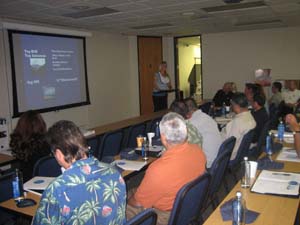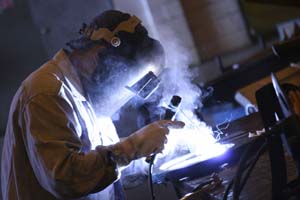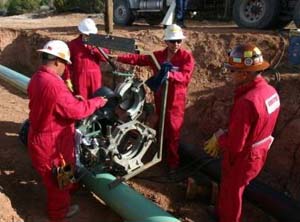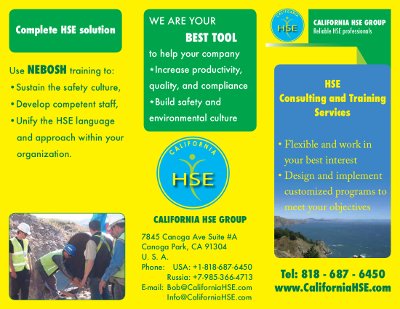



SAFETY DAY FOR BP-RUSSIA, MOSCOW
The safety culture of an organization may be defined as the shared values, attitudes, perceptions, competencies, system of behavior, and practices that determine the commitment of the individual and group to the organization’s health and safety system.
In Europe and United States big corporation in the manufacturing, mining, and oil and Gas industries are actively creating and promoting safety culture due to their strong belief that Safe work environment and safe employee means increase in production, higher quality of product, efficient working practices and higher employee loyalty and commitment to the organization. All which can be translated into more revenue for the organization.
Further more, Safe work environment and safe employee can significantly reduce number of accidents, and absenteeism, staff turn-over, undesired legal action, citations, reputation damage, and many other negative consequences.
Simply put, saving lives, means more money in the pocket of the management and the share holders of any organization. Investing in safe system of work and educating employees to observe safe work practices is great investment that will yield high return in the short and long term.
Isn’t time for us in Russia to associate higher profit with safer work environment and practices?
“I was surprised that only western companies are inviting me to discuss methods of improving their safety culture”, said Bob Salem the general director for California HSE Group, Inc. “The Russian companies even with their shaky safety records, are very skeptical of the important of the safety culture.”
I was asked by a top manager of a major oil and gas Russian company, and I quote “why should we spend so much time and money on training our employees? We train and make them better workers then they leave us or ask us for more money!”
I replied, by saying, and if you do not train them, do you guarantee that they will stay? I added that nowadays, one method of winning the loyalty of an employee is by training and educating them. A process not only beneficial for the employer financially but also conveys the message of care and responsibility from the employer towards the employee which in return win the employees loyalty, commitment, and better performance on the job. Again all this means increase in profit and reduction in losses.
It amazes me that Western managers are on a mission to reduce work related harm to their Russian employee, while Russian mangers careless about their own country men.
In a recent training at an Oil and Gas company, all western mangers of all departments such as, finance, accounting, offshore, E&P, Communication, Air transport, Legal had attended the Hazard Identification training, where the only Russian manager to attend such training was the HSE manager. While, Russian department managers acted too big and too important to attend. If management’s attitudes and actions as such, what and how should the subordinate’s attitudes and actions be?
Although I must admit, the Russian HSE manager is proven to be great inspiration and HSE role model for me. I never met any manager who approached the safety issue with so much passion and genuine care. He sincerely wanted his collogues to be safe. He is on a mission to have zero accident at work. I was happy to be of support to him and his team. I wish there are more managers like him.
After all, management’s attitudes and behavior, in terms of safety, influence safety culture including:
- The success of safety measures.
- Implementing safety behavior measures.
- The reporting of near-miss occurrences, incidents and accidents.
- Employees working safety.
- Employees taking work related risks.
- Influencing production pressures.
- Health interventions.
- Work related stress.
- General attitude towards safety and the organization.
The responsibility of creating and maintaining Safe work place starts with the leadership. Corporate Leaders and managers in the west are trained to be communicators and held responsible for the safety of their employees and safe operation. In England and other countries, the manager could be help liable if he is negligent or failed to ensure safe work place for his subordinate specially if such failure result in an accident.
However, in Russia most managers are either from engineering or financial background and they are driven by production goals only.
So who is out there to protect and look after the employee?
One way is to educate those managers on the financial benefits of a safe work place and employee. Then introduce managers to safety leadership trainings One successful program was designed and tested by California HSE Group specially for the Russian managers, Russian culture, and Russian environment.
Another program is aimed at an overhaul of the safety culture of an organization and to usher the organization’s commitment to safety is by organizing an aggressive safety campaign that will ensure the participation of every employee in every department. It is cost effective and the rewards are enormous. This program was tested in Russia where BP was one of several companies to invite ROSHA HSE consulting and training company to create and arrange such activity. During this campaign, most employees were discussing health and safety issues daily without effecting their work load or output. The level of awareness was noticeably increased and many employees expressed their intention to take the lessons learned home to their families. At BP all departments made safety posters, safety pledges, participated in weekly newsletter, translated safety messages from English to Russian and visa versa, and participated in the company’s own safety pledge video, and safety day celebration. The Safety campaign program for BP was successful in engaging 100% of the employees, communicate BP safety policies, and increase safety awareness.
“It is always best, for any organization that has the intention to improve their safety performance, to start by objectively examining their safety culture and leadership style, goals, and work procedures” Said Bob Salem, California HSE Group. “ I am sure the Russian HSE Company (ROSHA HSE consulting and training company) would offer free initial consultation to help with :
- The current culture of your organization
- The leadership style of your organization and how that style often drives its culture
- How to conduct an employee assessment that predicts safety issues
- The likelihood of a job candidate displaying unsafe work behavior.
What impresses me the most about ROSHA HSE Consulting and Training, is that they are first and only Russian company that is accredited by NEBOSH as a training center in Russia. They are building a bridge between the international, Western safety culture and the Russian Safety culture. They are bringing the international safety standards to the door steps of their Russian clients.
NEBOSH is recognized world wide as most prestigious and most sought-after qualifications and certification in the Oil and Gas, mining, and manufacturing industry. ROSHA HSE offers NEBOSH training in Russia at their center or at their clients venue at very competitive rates.
NEBOSH is great instrument in unifying the HSE language and terms in the Oil and Gas, mining, and manufacturing industry. It will elevate any participant or organization to much higher safety standards and improves safety management’s skills and culture.
Improving Safety culture is a process that requires commitment, consistent and determination. Share holders and management must acknowledge and incorporation necessary safety measures to improve and maintain safe work place and safer employee. Such measures must be an essential part of the organization’s policy. To facilitate successful plan and system of improvement and change, ROSHA offers wide range of cost effective HSE consultation and many HSE training programs that had been customized to fit the Russian employees, culture and environment. ROSHA management always ready to share the principles and approaches from traditional safety theory, cognitive psychology, behavioral psychology, expectancy theory, empowerment theory and successful transformation theory and the applicability of each to safety culture improvement. Ultimately, positive safety culture can be achieved only when the organization chooses to do so.
Successful organizations and managers do not wait for accidents to react or to realize the need for safety culture improvement (reactive method). Instead they take the proactive approach and prepare their employee and work place for zero tolerance of unsafe conditions and unsafe work behavior (pro-active method).
To successfully build a bridge between the safety culture of the Russia and safety culture of the west, California HSE Group, facilitating means for the Russian employees to be acquainted with the international standards, while at the same time facilitate training for Expats to learn the Russian legislations, culture, while they are working in Russia. “Learning each other methods, and finding a common terms and standards is the only way to bridge the HSE gap and the differences of so many cultures” Bob Salem, California HSE Group, Inc.

